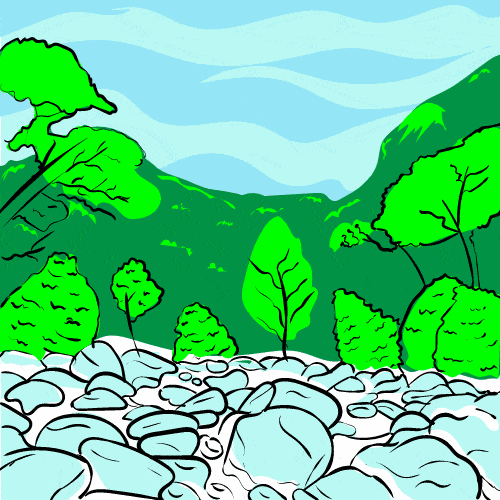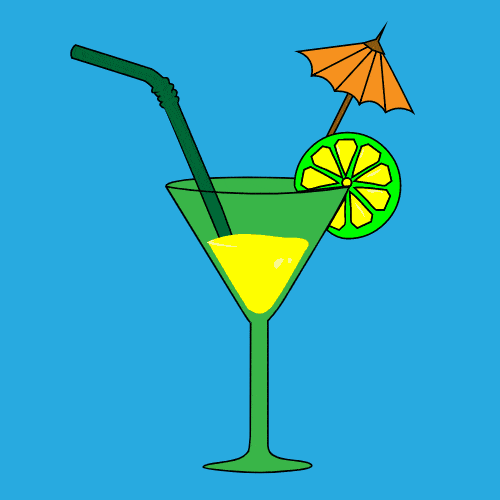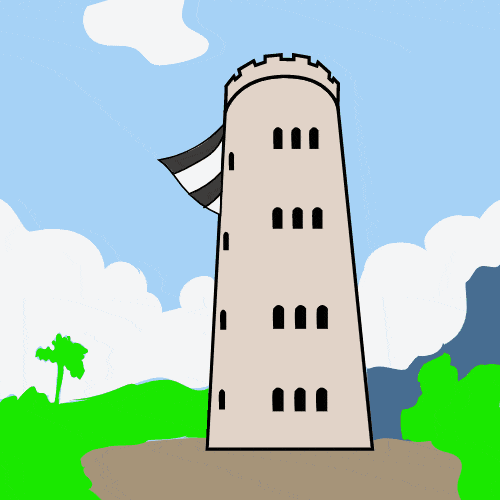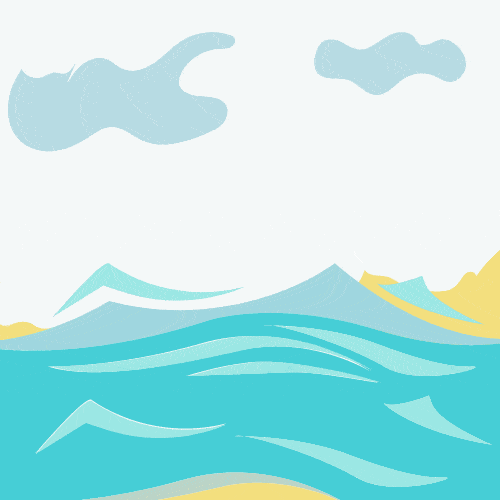When you visit Puerto Rico, you will see people of many different descents.
To understand how such a small island has great diversity, we must study Puerto Rican history.
I have a Social Sciences Degree with a minor in Puerto Rican history.
In this article, I will cover everything you need to know about the history of Puerto Rico. You will learn the facts as they happened and the history as it unfolded:
– 4000 BC to 1600 AD: The island’s first inhabitants
– 1600’s-1900’s: Spanish empire declines
– 1900’s to 2000’s: Change and resilience
Quick Answers:
– What is the brief history of Puerto Rico?
– When was Puerto Rico discovered?
– When was Puerto Rico founded?
– What are 5 historical facts about Puerto Rico?
– Frequently Asked Questions
The first inhabitants of Puerto Rico
4,000 BC to 200 BC The Archaics
Around 4,000 BC, fishers, hunters, and gatherers from Central America settled in the Greater Antilles and Puerto Rico.
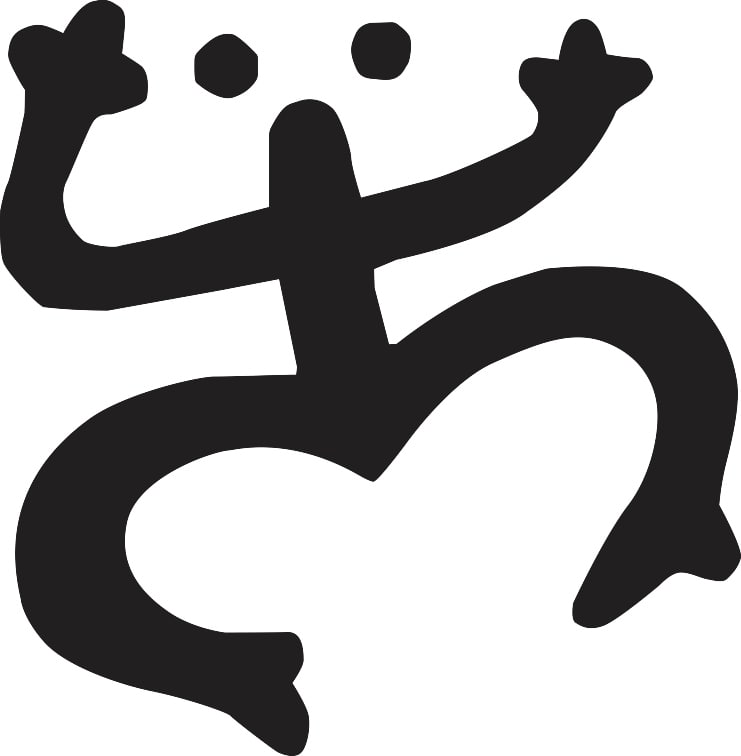
Anthropologists named these people The Archaics.
The Archaics used polished stone objects for hunting and bone fragments for fishing but had no agricultural skills.
100 BC to 1000 AD The Igneri
The Igneri came from the Orinoco River in Venezuela.
They traveled in canoes and settled in the Antilles close to 100 AD.
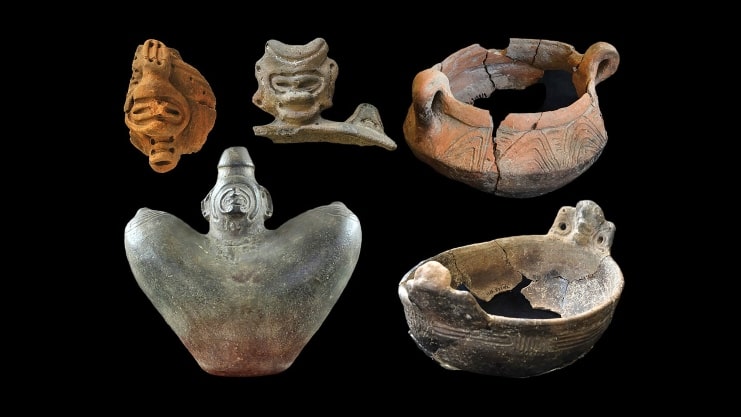
The Igneri harvested the land and were ceramic artisans.
The Archaic and The Igneri became one culture.
1000 AD to 1600 The Taino
By 1000 AD, a subgroup of the Arawak named Taíno arrived in Puerto Rico.
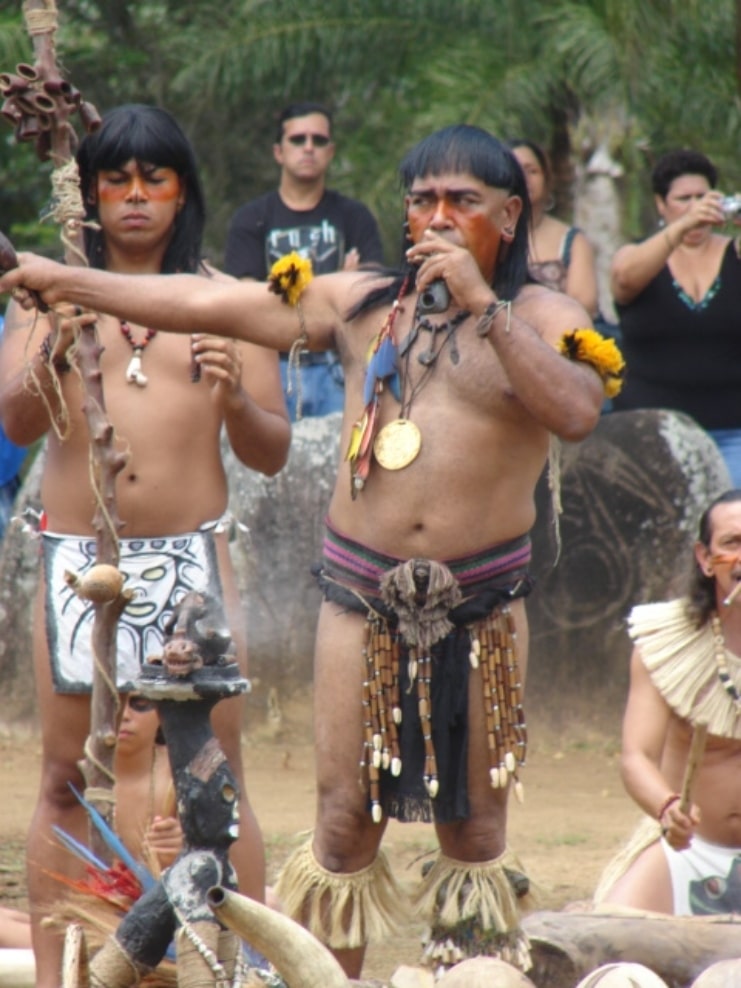
The Taino achievements include:
- The construction of ceremonial ballparks.
- The development of a universal language.
- The creation of religious beliefs.
For them, Yocahu was the supreme Creator. The Goddess Guabancex was perpetually angry and ruled the power of the hurricane.
The Taíno had hierarchically arranged chiefs or caciques. They lived in villages named Yucayeques, and each had a Chief.
By the time the Spaniards came to Puerto Rico, there were 20 Yucayeques.
The Caribs were another group of indigenous people The Spaniards encountered when they arrived in Puerto Rico. The feared marauders and rumored cannibals hailed from South America.
Caribs often raided the Antilles, killing men and kidnapping women.
A study published by The Florida Museum using facial recognition technology proved that The Caribs lived throughout the Caribbean Islands.
The “discovery” from 1493 to 1508
Christopher Columbus set sail from Cádiz, Spain, on September 25, 1493.
He came to the New World with almost 1,500 men distributed in 17 ships.
This was Columbus’s second voyage, and the Spaniards brought horses, sheep, and cattle, animals never seen before in the Americas.
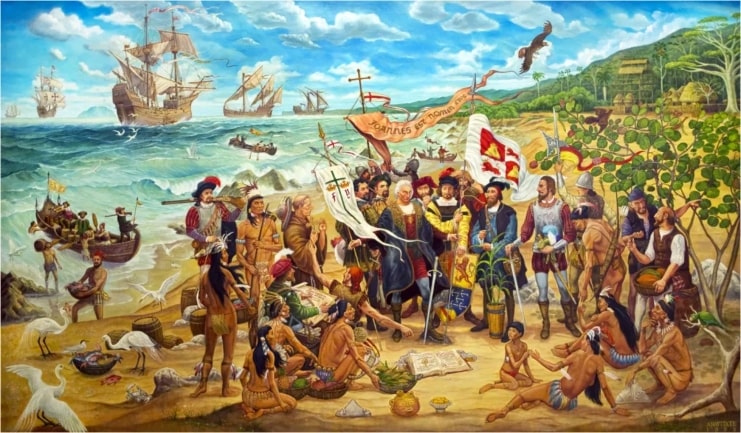
Christopher Columbus arrived in Puerto Rico on November 19, 1493.
Columbus named the Island San Juan Bautista in honor of John The Baptist.
Puerto Rico’s leading anthropologist Dr. Ricardo Alegria estimated that by the time Columbus arrived, 30,000 Taino Indians were living in Puerto Rico.
The Taino kindly welcomed the Spaniards, showed them gold nuggets, and told them they could take as many as they wanted.
Juan Ponce de Leon, a former Columbus Lieutenant and Governor of The Province of Higuey, heard about the riches of San Juan Island.
Ponce de Leon asked Viceroy Juan De Obando permission to explore and subjugate the Island of San Juan Bautista.
Juan Ponce De Leon founded Caparra on August 8, 1508.
Caparra was the first Capital of Puerto Rico.
Ponce de Leon subdued most of the Taino population within a year of his arrival.
In that same time frame he gained control over most of the Island.
The Spanish Crown rewarded Ponce de Leon by naming him Governor and Captain-General of San Juan Bautista Island.
1511: The death of the gods and the Taino Rebellion
From 1508 to 1511, the Spaniards and the Taínos lived in relative peace.
But after Agueybana’s (The Main Cacique of the Island) death, relations between the two groups deteriorated quickly.
The Spaniards had the Taino doing forced labor, mining for gold, and harvesting.
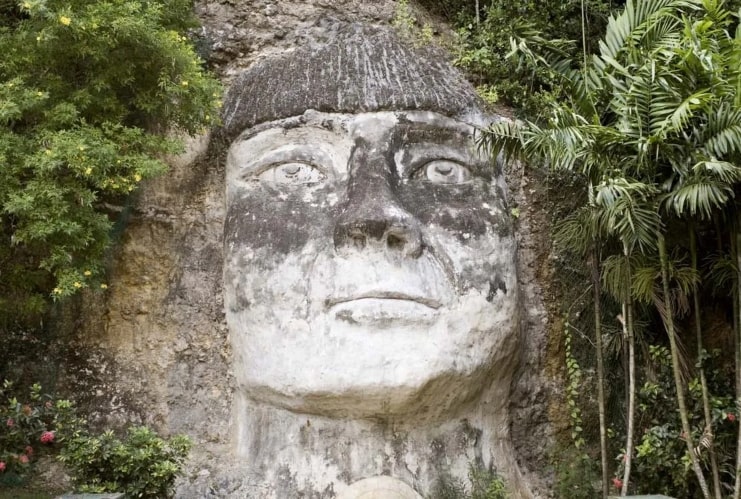
The Taino feared the Spaniards; they thought they were immortal gods.
Agueybana II (nephew of Agueybana l) and Urayoan (Chief of Añasco) set out to prove if the Spaniards were immortal.
They set a trap for a Conquistador named Diego Salcedo and drowned him in the Añasco River.
Legend says that the two Caciques waited for several days to see if Salcedo would return to life.
The news of the mortality of the Spaniards gave hope and courage to the Taino.
Their first attack was successful; they killed almost all the Spaniards in Villa de Sotomayor (now the town of Aguada, and destroyed the village.
But the Spaniards retaliated, and in the battle of Guajataca, they crushed Chief Mabodomaca and his men.
For more information about this battle and the legend of Mabodmaca, please check our article about La Cara Del Indio.
After the battle of Guajataca, Ponce de León led the Spaniards in a series of offensives that culminated in the Battle of Yaguecas.
This battle ended Taíno resistance.
Spanish soldiers killed Agüeybaná II, and the remaining Taíno rebels retreated to the mountains at the Island’s center or moved to the Lesser Antilles.
1520: The new capital and the mighty fortress
The settlement in Caparra proved to be inadequate.
Ponce de Leon asked the Crown permission to move the settlement to the San Juan Islet.
The Spanish Government approved the move for military considerations.
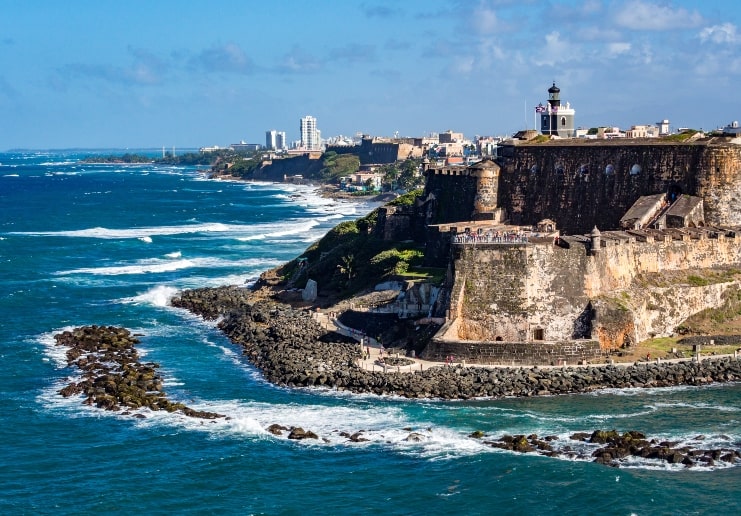
Between 1519 and 1521, they moved the capital of San Juan to what is now Old San Juan and named it Puerto Rico (Rich Port).
A few years later, the names were inverted; the capital became San Juan, and the Island Puerto Rico.
The Spaniards built La Fortaleza (the fortress) to protect the capital from 1533 to 1540.
The Spaniards knew that Puerto Rico had a privileged geographical position and started calling it the gateway to the new world.
Governments said that the country that controlled Puerto Rico would control the Americas.
To protect the Island, the Spaniards started building Castillo San Felipe del Morro in 1539.
By the time they finished El Morro, around 1790, it had a reputation for being unconquerable. It was the most feared Spanish fortification in the New World.
For more information about El Morro and the attacks it withstood, please check out our article, Castillo San Felipe del Morro – All You Need To Know.
1587: Situado Mexicano (Mexican Funds)
By 1582, enslavement, starvation, and disease brought the Taino close to extinction.
Spaniards depleted the Island’s gold, and The Spanish Crown was not profiting from Puerto Rico.
But they needed to retain the Island.
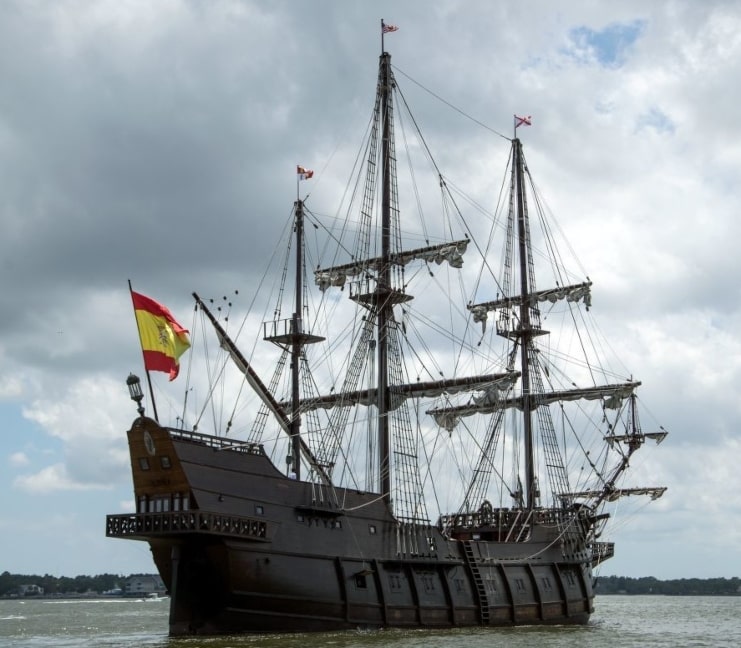
Puerto Rico’s position made it a valuable asset in fending off attacks from other European countries.
To fund Spain’s operation in Puerto Rico, the Crown established a fund-transferring system named “Situado Mexicano.”
Once a year, a ship with gold from Mexico would come to Puerto Rico to finance the governmental activity.
1600-1800: The real pirates of the Caribbean
With The Taino almost extinct, the Spaniards began the trafficking of enslaved human beings from Africa to Puerto Rico and forced them to work the land.
Sugar cane, tobacco, and livestock were the base of Puerto Rico’s subsistence agriculture.
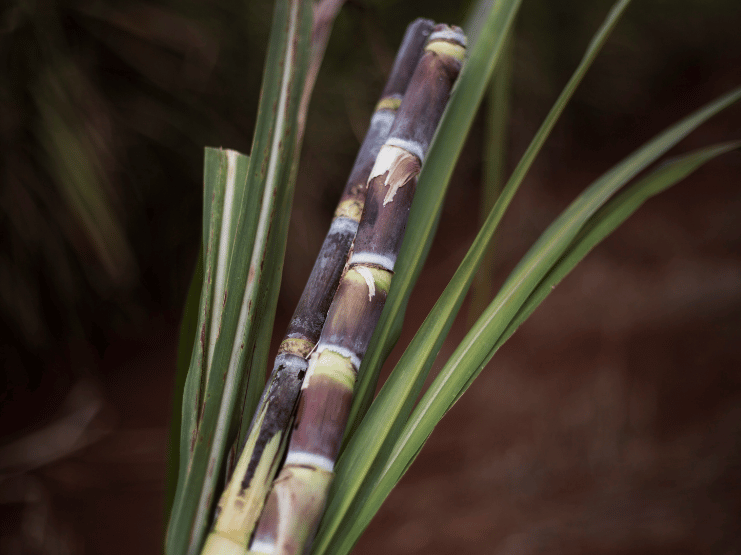
The Crown’s trade restriction made making business in Puerto Rico almost impossible.
People from Puerto Rico started “illegal trading” with other countries.
Money was scarce, so they traded goods and merchandise.
Historians estimate that smuggling represented 70 to 90% of Puerto Rico’s economy during this time.
1800 to 1897: Spanish empire decays, Emancipation of enslaved people and Grito de Lares
After three hundred of being ruled by Spain, most of the Spanish colonies gained their independence in a short period.
From 1808 to 1826, Spain lost all its possessions in the “New World” except for Cuba and Puerto Rico.
These events brought unprecedented population growth in Puerto Rico.
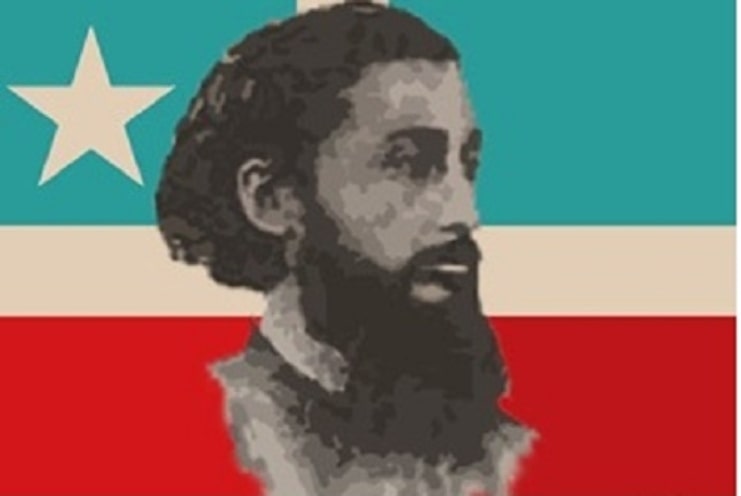
Spanish subjects from possessions that gained their independence from Spain came to Puerto Rico.
On March 22, 1873, The Spanish Crown abolished slavery in Puerto Rico. Puerto Rican elite worried about their future.
Economic decay was imminent without enslaved people and with the tariffs and taxes, The Crown imposed on Puerto Rico.
On September 23, 1868, a group of Puerto Ricans led by Ramon Emeterio Betances declared independence from Spain in the town of Lares.
This armed uprising is known as Grito de Lares.
The poorly armed, untrained men were no match for the Spanish soldiers. The Spanish army defeated in a day a revolt that took 12 years of planning.
But the revolt was not a complete failure.
The Spanish Crown gave Puerto Ricans more autonomy and representation after the revolt.
1898: The change of sovereignty
On February 15, 1898, Spanish forces sank U.S.S. Maine in Havana harbor; the Spanish-American war was on its way.
The United States crushed Spanish forces.
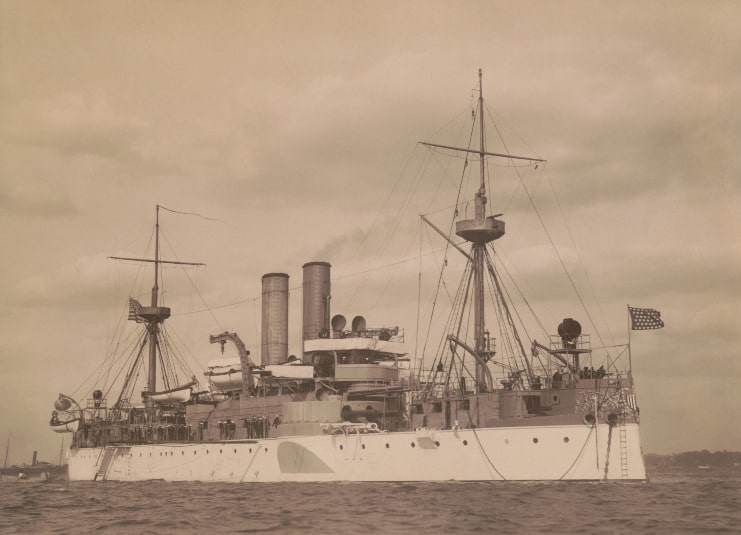
Hostilities ended on August 12, 1898, and The Treaty of Paris, signed on December 10 of the same year, officially ended the war.
Spain gave up Guam, Puerto Rico, and The Phillipines in exchange for a U.S. payment of 20 million dollars.
After 500 years, the Spanish domain of Puerto Rico ended.
1900 to 1920: Civil government and United States citizenship
U.S. President McKinley signed The Foraker Act on April 2, 1900.
He established a civilian government in Puerto Rico.
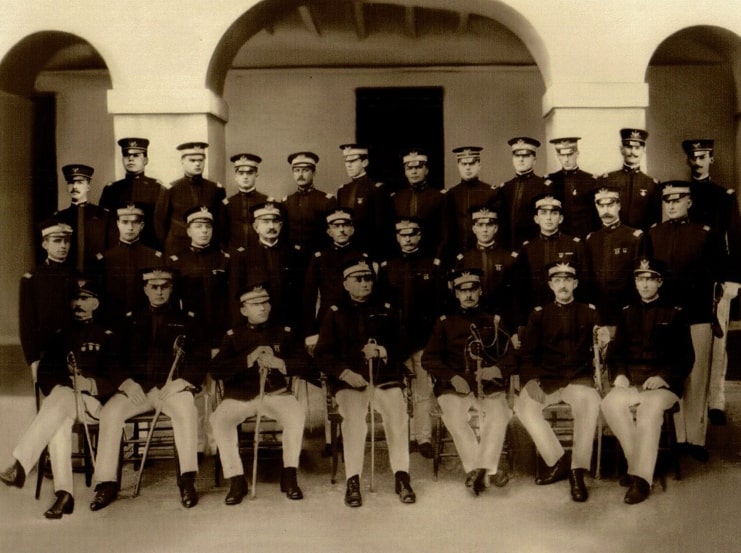
The new Government consisted of a governor and an executive council which The President of the United States appointed and a House of Representatives with 35 elected members.
The Foraker Act (named after its sponsor Ohio Congressman Joseph Benson Foraker) also created a judicial system with a Supreme Court and a Resident Commissioner in Congress with right to be heard but without power to vote.
Foraker act stated that all federal laws in the United States applied in Puerto Rico too.
On March 2, 1917, President Woodrow Wilson signed the Jones-Shafroth Act, giving Puerto Ricans U.S. citizenship.
The law established the Puerto Rican Government’s executive, Judicial, and Legislative branches.
It also created a locally elected bicameral legislature. The President of the United States can veto any law approved by the Puerto Rico legislature.
Congress also had the power to stop any action taken by the legislature in Puerto Rico.
The U.S. kept control over fiscal and economic matters and authority over mail services, immigration, defense, and other governmental issues.
1918: The San Fermin earthquake
On October 11, 1918, a 7.1 magnitude earthquake shook the Island at 10:14 am.
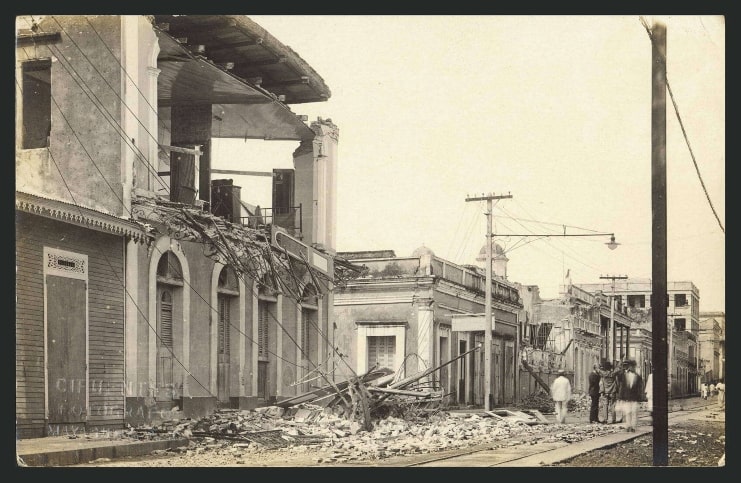
The Government estimated the damages at 29 million dollars, and the earthquake produced 116 casualties.
1930’s: The fall of the sugar cane industry
In the early 1900s, the Puerto Rican sugar industry grew dramatically due to tariff-free entry of the U.S. mainland.
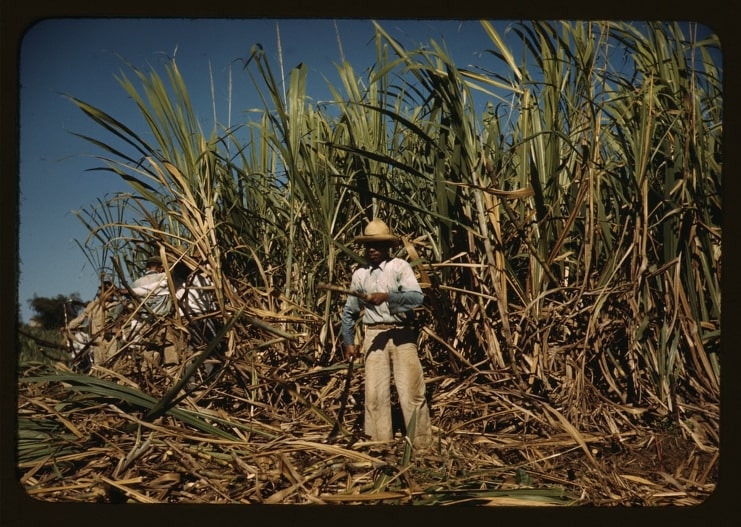
They turned Puerto Rico into a monoculture.
Absentee U.S. investors reaped all the profits and impoverished Puerto Rico.
The Great Depression hit hard the sugarcane industry in Puerto Rico.
With sugar prices dropping, the industry suffered, and Puerto Ricans became even poorer.
1939 to 1945: Operation Bootstrap and La Guagua area
By the end of the 30s, misery had swept across Puerto Rico.
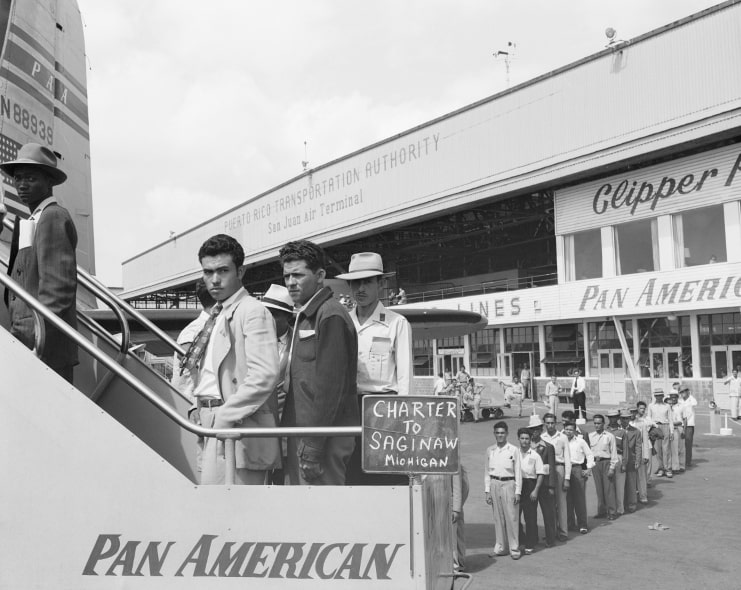
Journalist John Gunther described the Island’s situation with words like misery, disease, squalor, and filth. He thought it was inconceivable that American citizens had to live in such a way.
The Government created the Operation Bootstrap Plan.
Tax exemptions and economic incentives attracted U.S. investors who built factories in Puerto Rico and transformed its economy from agricultural to industrialized.
At the same time, the second world war left the United States with a shortage of workers.
The Puerto Rico government and the United States incentivized Puerto Ricans to move to the United States to work.
They refer to this as La Guagua Area or The Air Bus.
According to The U.S. Census, there are 5.6 million Hispanics of Puerto Rican origin living in the United States mainland.
1948-1952: The first elected Governor, The Constitution, and Commonwealth of Puerto Rico
Until 1948, Puerto Ricans had never elected their Governor.
From 1508 to 1898, The King of Spain appointed the Governor of Puerto Rico.
The President of The United States appointed Puerto Rico’s Governor from 1898 to 1948.
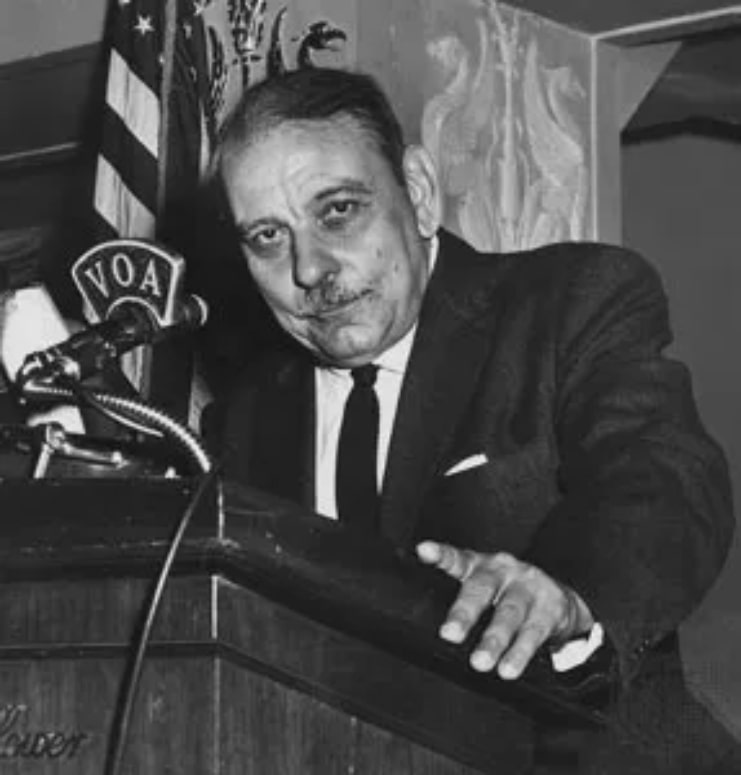
But on August 5, 1947, The United States Congress passed The Elective Governors Act allowing Puerto Ricans to elect their own Governor. President Harry Truman signed the Act.
Luis Munoz Marin was the first Governor elected by Puerto Ricans.
In October 1950, President Harry Truman signed the Puerto Rico Commonwealth Bill enabling Puerto Ricans to establish their constitution.
For almost two years, the best Puerto Rico politicians and statesmen worked on a Constitutional Assembly to write the Constitution of The Commonwealth of Puerto Rico.
The United States Congress approved the Constitution of Puerto Rico on July 3, 1952.
The Constitution of Puerto Rico became effective on July 25, 1952.
Here is a list of Elected Governors of Puerto Rico:
- Luis Muñoz Marín (Born in 1898 and died in 1980) Was the first governor elected by the Puerto Rican People. He was Governor between the years: 1949 to 1964.
- Roberto Sánchez Vilella (Born in 1913 and died in 1997) was Governor from 1965 to 1968.
- Luis A. Ferré (1904–2003) was Governor from 1969 to 1972.
- Rafael Hernández Colón (Born in 1936 and died in 2019) governed Puerto Rico from 1973 to 1976. His second term was from 1985-1988, and he was elected for third term from 1989 to 1992
- Carlos Romero Barceló (born in 1932 died in 2021). He was Governor for two terms, from 1977 to 1984.
- Pedro Rosselló González (born in 1944) governed Puerto Rico for two terms, the first from 1993 to 2000. Pedro Rosello is the father of former Governor Ricardo Rosello.
- Sila María Calderón Serra (born in 1942) In 2001, she became the first female elected to govern Puerto Rico. Calderon was in office from 2001 to 2004.
- Aníbal Acevedo Vilá (born in 1962) was Governor from 2005 to 2008.
- Luis Fortuño Burset (born in 1960) governed Puerto Rico from 2009 to 2012.
- Alejandro García Padilla (born in 1971) served as Governor from 2013 to 2017.
- Ricardo Rosselló Nevares (born in 1979) Only governed the Island for a year, from 2018 to 2019. Public protests over a private chat made him resign.
- Pedro Pierluisi (born in 1959) was elected in 2021 and began governing the Island in 2021.
Wanda Vazquez Garced is the only non-elected Governor of Puerto Rico. She was appointed Governor by constitutional law after Rosello’s resignation.
1954 to 1980: Convulse times
The Nationalist Party that wanted Puerto Rico’s independence saw Governor Luis Munoz Marin as a traitor.
They thought that the Commonwealth was just a colony with another name.
Four Puerto Rican Nationalists: Lolita Lebron, Rafael Cancel Miranda, Andres Figueroa Cordero, and Irving Flores Rodriguez, attacked The House of Representatives of The United States on March 1, 1954.
They were in the public galleries and fired guns onto the House Floor wounding five U.S Representatives.
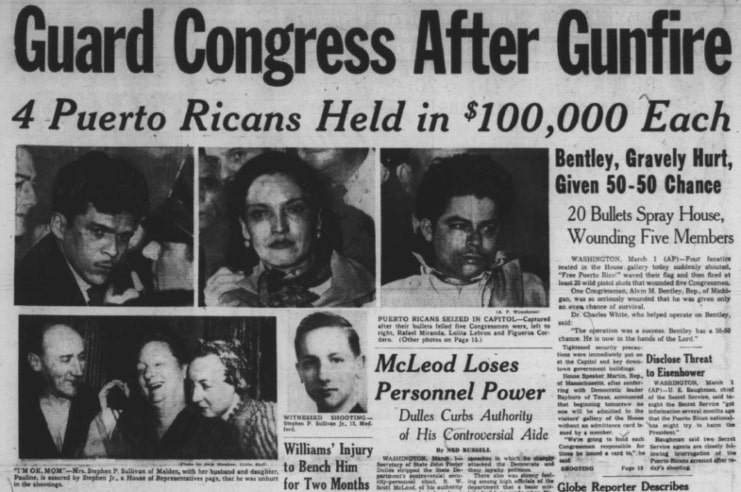
The four nationalists were arrested, trialed, and incarcerated.
These events unleashed a furious persecution of nationalists in Puerto Rico.
The Puerto Rico Government started profiling and surveilling people they thought were nationalists.
On July 25, 1978, two young nationalists and a police informant kidnapped a taxi driver. They told him to take them to a Mountain named Cerro Maravilla.
The activists wanted to broadcast a message from a mountain radio station.
Police were waiting for them, and they killed the two young men while kneeling and begging for their lives.
Two policemen were convicted on murder charges, and high government officials were accused of planning the deaths of the young men.
1976 to 1996: Section 936 economic boom
Section 936 of the Federal Tax Code allowed subsidiaries of U.S. firms operating in Puerto Rico to pay no federal taxes on the profits they obtained from Puerto Rico.
These tax exemptions made U.S. companies take their operations to Puerto Rico.
Factories boomed across the Island, and well-paid jobs were available for many Puerto Ricans.
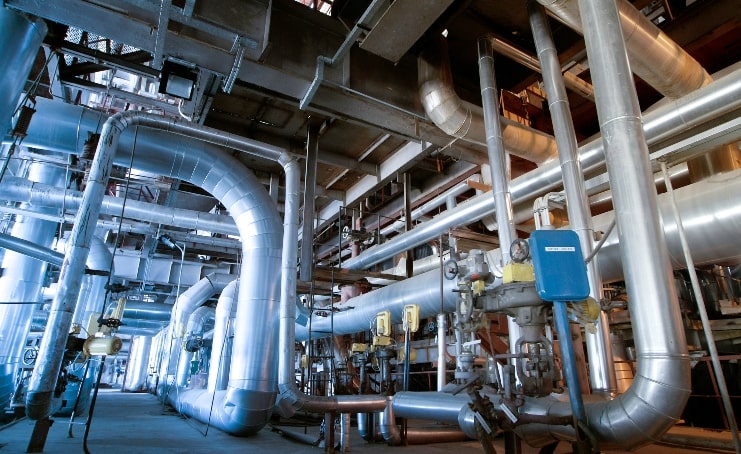
But all good things come to an end.
The GOP frowned at section 936 and called it economic welfare.
Both parties agreed that the tax break was too costly for the Treasury.
In 1996, President Bill Clinton signed a law that would eliminate Section 936 over ten years.
2006 to 2014: Debt crisis and bankruptcy
Despite being warned ten years before, The Puerto Rican Government did nothing to prepare for the loss of Section 936 income.
The Government artificially replaced the lost income by borrowing money to pay its obligation.
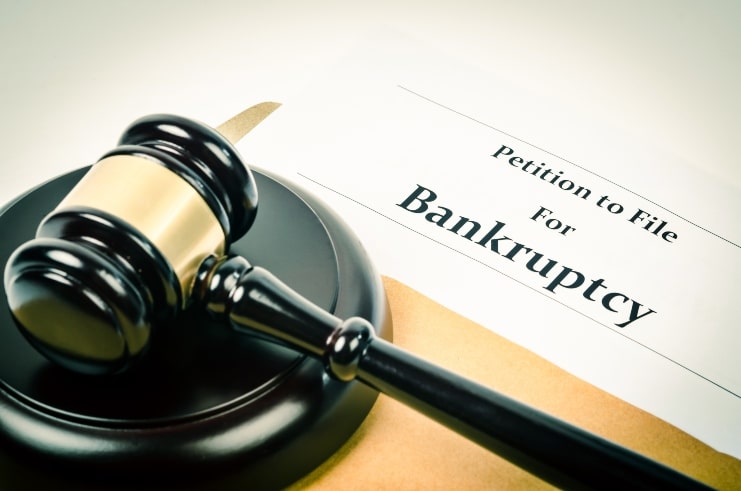
In 2014, the Government could not pay its debt, and three major credit agencies downgraded Puerto Rico’s bonds to junk status.
The downgrading prevented Puerto Rico from selling additional bonds.
The once buoyant Puerto Rico’s economy was now 70 billion dollars behind.
2016: PROMESA takes over
In 2016 President Barak Obama signed the Puerto Rico Oversight Management And Economic Stability Act.
The law established a financial oversight board, a process for restructuring debt, and expediting procedures for approving infrastructure projects to repair Puerto Rico’s Debt Crisis.
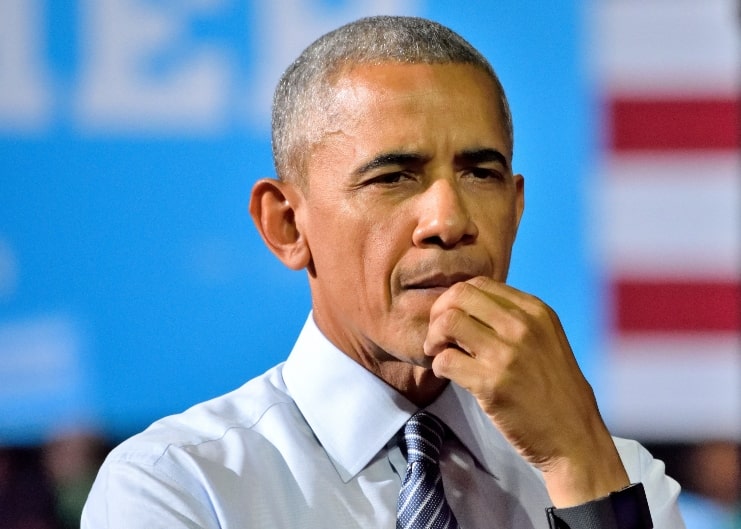
Through PROMESA, The U.S. Congress established an appointed Fiscal Control Board to oversee the debt restructuring.
The FCB had complete control over Puerto Rico’s financial decisions; they could veto or revert any decision made by the Government.
By May 2017, the Puerto Rican Government and its corporations owed around $120 billion dollars.
That made The FCB request the immediate appointment of a Federal Judge to resolve what they called the “largest bankruptcy case in the history of the American public bond market.”
September 20, 2017: The longest night
On September 20, 2017, Hurricane Maria landed in Puerto Rico at approximately 6:15 (AST) as a category four hurricane with winds of 155 mph.
Maria caused 3,059 casualties, 91.61 billion dollars in damages, and left the Island without electricity for months.
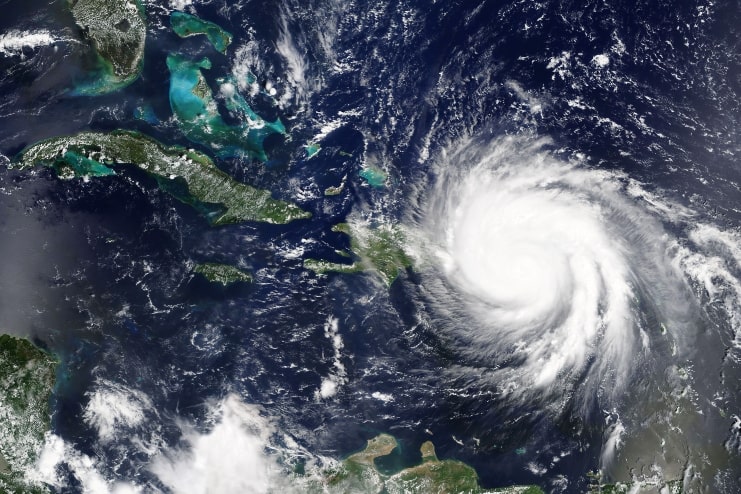
Puerto Rico looked like a war-devastated country.
National Guard helicopters, trucks, and troops were delivering help and supplies.
But Maria brought out the best of us; people started helping their neighbors and sharing what little food or water they had.
From Maria, we learned that Puerto Ricans are stronger than the circumstances.
2018 to 2020: Getting back on our feet
With help from the Federal Emergency Management Agency (FEMA), we began rebuilding the Island after Maria.
If you visit us now, you wouldn’t believe that the Island was devastated by Maria just five years ago.
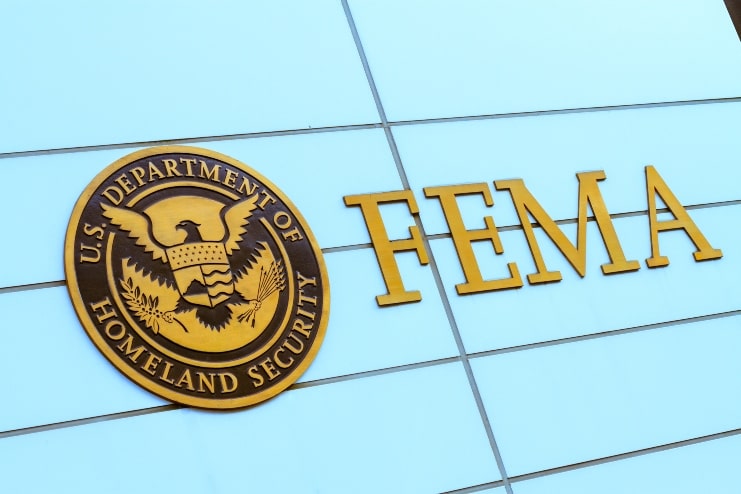
We are resilient, and we are getting back on our feet.
Hurricanes have been a part of our way of living since the time of The Taino.
For more information about hurricanes in Puerto Rico, please check out our article Hurricane Season In Puerto Rico – All You Need To Know.
Summer of 2019: Peaceful protests, Rossello resigns
On July 13, 2019, people from Puerto Rican society protested, demanding Governor Ricardo Rosselló’s resignation.
Two weeks later, on July 24, 2019, Rosselló gave in to the pressure and resigned.
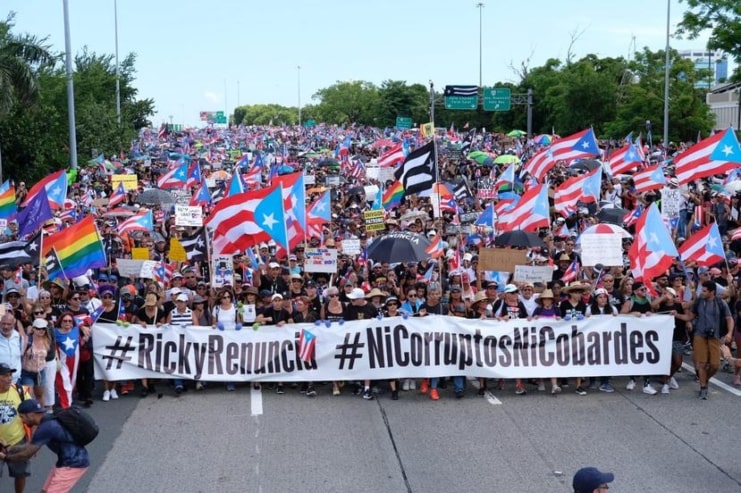
The event that started the protests was the “leaking” of online chats between Rosselló and a close group of collaborators.
Rosselló and his inner circle made lewd jokes about political opponents. They made fun of the poor, even of their political supporters (“we make fools even of our own”), and threatened violence toward opponents.
For the first time in United States history, a peaceful “uprising” made a Governor resign.
2020: A tough year
On January 7, 2020, a 6.4-magnitude earthquake caused significant damage in the southwest area of Puerto Rico.
Fortunately, only four people lost their lives, and nine were injured.
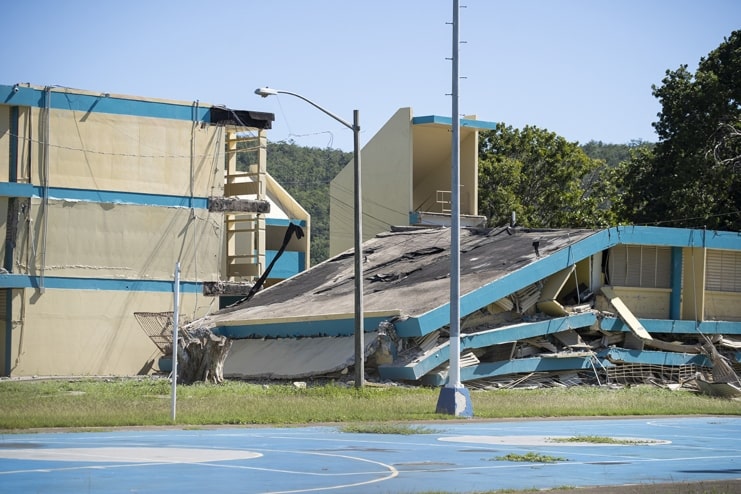
But damage from the earthquake was estimated at 3.1 billion dollars.
A couple of months later, in March 2020, COVID-19 arrived to Puerto Rico.
The Island was in lockdown for months.
According to The New York Times, over 5,000 people died of COVID-19 in Puerto Rico.
2022/2023: Light at the end of the tunnel
On March 15, 2022, Puerto Rico’s Government formally exited bankruptcy.
They restructured the public debt and started paying the bondholders.
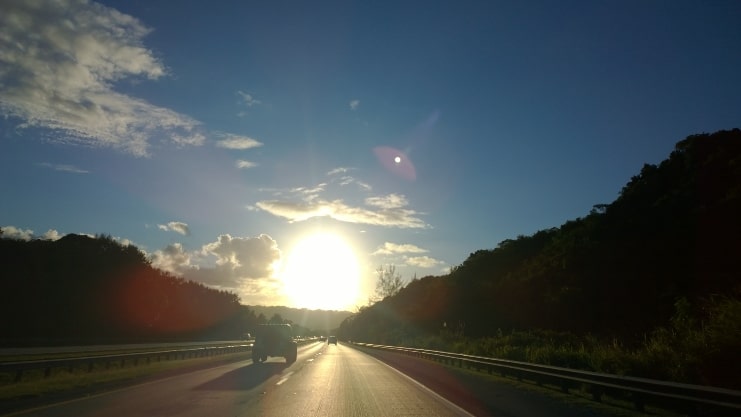
Another historic event occurred in Puerto Rico on September 2022.
Puertorico.com, through its founder Jordan Fried, assembled a team of professionals that includes writers, promoters, graphic artists, and technology experts.
With his team, Mr. Fried launched the best web page about tourism in Puerto Rico tourism.
This effort will benefit Puerto Rico’s economy and will help tourists get the best from their visit to Puerto Rico.
What is the brief history of Puerto Rico?
A brief history of Puerto Rico, is we always get back up.
We have endured hurricanes, earthquakes, corrupt politicians, and economic hardship.
When was Puerto Rico discovered?
Christopher Columbus landed in Puerto Rico on November 19, 1493.
The Archaic Indians came here about 3,000 years before.
When was Puerto Rico founded?
In 1508 Ponce De Leon founded the Caparra; around 1520, they moved the town to what is now Old San Juan.
What are 5 historical facts about Puerto Rico?
- Native people inhabited Puerto Rico thousands of years before Columbus’s arrival.
- The United States took possession of Puerto Rico in 1898 after winning the Spanish American War.
- In 1917 United States Congress granted the people of Puerto Rico United States citizenship.
- In 1948 The People of Puerto Rico elected their Governor for the first time.
- In 2019 peaceful manifestations overthrew a Governor.
FAQ section
What was Puerto Rico called initially?
The Taino named the Island Boriken, which translates to The Land Of The Valiant And Noble Lord. Christopher Colombus named it The Island of San Juan The Baptist. When Ponce de Leon moved the capital to the Islet, he called it Puerto Rico or Rich Port. A couple of years later, they interchanged the names; They named the capital, San Juan, and the Island Puerto Rico.
Were there people in Puerto Rico before it was discovered by Christopher Columbus?
Yes, The Archaics came to Puerto Rico from Central America three thousand years before The Spaniards. The Igneri arrived from Venezuela later. And the Taino came to Puerto Rico close to 1,000 AD.
Final thoughts
Puerto Rico has a long and rich history.
From the Archaic Indians 4,000 years BC to this day, the People of Puerto Rico have made history on this Island.
They have fought wars, endured natural disasters, and built a thriving society.
For more information about Puerto Rico’s history, please check our list of articles about the different cities and historical places.

